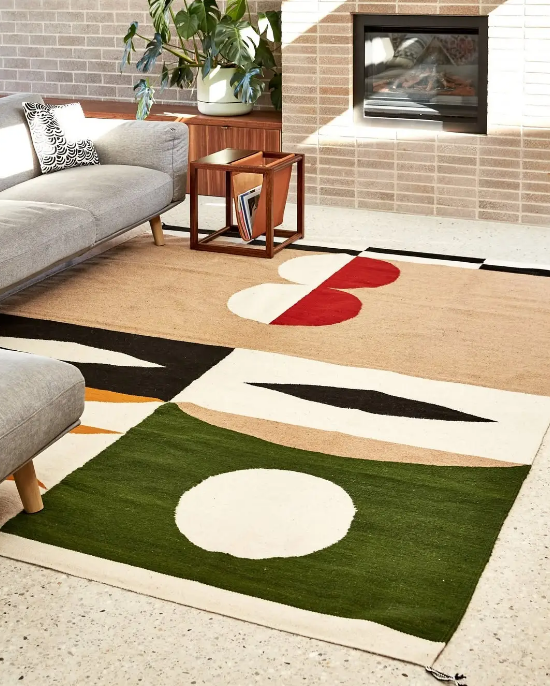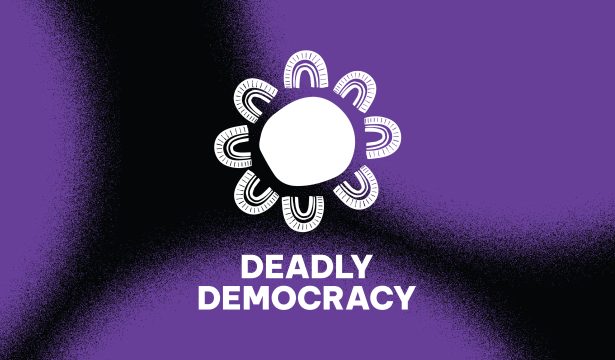
Sasha Titchkosky – 2025 Women in Design Award
- Published on: 22 October 2025
Share
THE WOMEN IN DESIGN AWARD WAS ESTABLISHED IN RESPONSE TO THE SIGNIFICANT GENDER IMBALANCE WITHIN LEADERSHIP ROLES IN THE DESIGN INDUSTRY.
THE AWARD SEEKS TO RECOGNISE AND CELEBRATE WOMEN WHO HAVE MADE NOTABLE CONTRIBUTIONS TO THE INDUSTRY AND ENCOURAGE MORE DIVERSE AND EQUAL REPRESENTATION ACROSS DESIGN AND CREATIVE SPACES.
In 2025, Good Design Australia celebrates Sasha Titchkosky, co-founder and CEO of Koskela, for her pioneering work in sustainable design, circular business and social impact.
We had the pleasure of sitting down with Sasha to reflect on her contributions to the design world.
Designing a system
Sasha Titchkosky didn’t start her career in design.
After studying law and accounting, she worked at the Australian Stock Exchange before walking away from corporate life to build a company designed as thoughtfully as the products it creates.
In 2000, Sasha and her partner Russel Koskela founded Koskela, now one of Australia’s leading sustainability pioneers in furniture and design. From day one, their goal was to make things locally, make them well and make them last.
Two decades later, Koskela remains a benchmark for responsible design as Australia’s first certified furniture B Corporation and a leader in sustainable, Australian-made products for workplaces, schools and homes.
Sasha is steering the company towards full circularity by 2027 and absolute-zero emissions by 2035, challenging the linear ‘make, use, discard’ model that dominates modern consumerism.
The sum is greater than the parts
Sasha didn’t want to just design products, she set out to create something a little bigger.
“The real opportunity in terms of design was the idea of being able to design a company. How do you design a business that actually reflects your values and really represents that?” Sasha shared.
“We’re [Koskela] an Australian furniture design company that was established in 2000. We work across workplaces, universities, schools and residential.
“We’ve always committed to manufacturing all of our products locally…we really wanted to know what was going into our products and who was manufacturing them and the conditions under which they were being made.”
Closing the loop
Koskela’s approach has always centred on responsibility, from material choice to life-cycle analysis. As the company matured, its focus deepened from design intuition to data-driven impact.
“As we’ve become more experienced and delved more into the data side of things…we are now able to more effectively measure our carbon footprint.
“We could see that every time we had a successful year in terms of revenue growth, our scope 3 emissions would also increase.
“That’s where our drive to circularity has really stemmed from…it’s the only way that I think we can reduce the carbon impact and the environmental impact of what we’re doing.”
For Sasha, circularity means accountability at every stage.
“[Circularity] means that you take responsibility for a product from the way it’s designed, what goes into it, how you can extend its life for as long as possible and then you take responsibility for it at the end of life.
“You build the products to be able to be pulled apart into its components and ideally to go back into the manufacturing of another product.”

2025 Women in Design Award – Sasha Titchkosky. Image: Australian House and Garden]
A new model entirely
The philosophy of circularity led Koskela to not only reimagine what they make, but also resulted in a bold shift in how their customers access furniture.
“What we concluded was that the best way we could do that was to actually stop customers owning our products.
“If we always retained ownership in them, then we’re naturally incentivised to create a really high quality product that’s cost effective to repair and is out in the market being used for as long as possible and then for it to come back to us at the end of life and for us to take responsibility for it.”
Koskela’s change towards a new business model is currently underway. Transitioning has brought both challenges and clarity.
“Mostly there’s a conflict within our corporate clients, between their capital expenditure teams and their operating teams.”
Koskela’s commitment to circularity is forcing corporations to confront their own blind spots and rethink the systems that position waste as the norm.
“In Australia, there are often lease incentives offered to corporates to purchase furniture, which they then own, but there’s no asset tracking in place,” Sasha explained.
“So, when their lease ends, they often have no clear record of what they have. That furniture has already been written off and sits on their books at zero value, so it’s not seen as something worth keeping.
“When the lease finishes, most of that furniture is left behind for the landlord to deal with. Because landlords are under pressure to re-lease the space quickly, the fastest and cheapest solution is usually to send it all to landfill.
“From a client’s perspective, it gives them the added bonus of the ability to adapt their workplace or classroom to cater to the changing needs of their teams or students because the subscription has the option of swapping things in and out. There’s more flexibility and adaptability that they don’t have when they actually buy furniture.”
Made here, made to last
Koskela’s commitment to local manufacturing has never wavered, even through decades of industry offshoring.
“I think we’re one of the few companies that has focused solely on manufacturing in Australia.”
The team built long-term partnerships through their point of difference.
“We’ve actually had a lot of our manufacturing partners for close to 25 years…we’ve kind of grown our businesses together.”
The same commitment to longevity extends to how products are designed. It’s the philosophy she instils in her design team: create with permanence in mind.
“What I want them to be thinking about is that they’re designing a future heirloom.”
That means resisting the easy wins of a fad-driven world.
“Often we’re not designing to trends or fads, because that’s when pieces get discarded.”

2025 Women in Design Award – Sasha Titchkosky. Image: Koskela on Instagram]
Design for Country. Design with care.
Koskela’s work extends beyond products, building lasting partnerships with First Nations artists and communities since 2009.
These collaborations have returned over $1.4 million to Indigenous creators and have been exhibited globally, from Japan and Milan to Brisbane, Melbourne and Copenhagen’s NOMA restaurant.
“Our first collaborative products launched in 2009, so we’ve had long-standing relationships with the communities we’ve worked with. The idea was to see whether Koskela could use our Industrial Design skills to create products together with First Nations artists.
“The most rewarding part has been the friendships and genuine relationships we’ve built. It’s given us a deeper understanding of First Nations culture that we wouldn’t have gained any other way. Our kids have been up to Arnhem Land a number of times, and those relationships have lasted over a decade.
“It’s been amazing to see what we’ve created together being exhibited internationally, like at Australia’s Expo Pavilion in Japan, and to help showcase those incredible cultures in new ways.
“What makes these collaborations meaningful is time. One of our collaborations took three years before the first products were ready.
“I think some companies struggle with that, they want results within commercial timelines that don’t always align with the communities they’re working with and with the time it takes to build trust.
“We’re also members of the Indigenous Art Code and work with the Copyright Council to make sure everything is done properly. Structurally, we’ve always tried to do things differently from the traditional art market, where all the risk sits with the artist. In our collaborations, artists and art centres know from the beginning what they’ll be paid.”

2025 Women in Design Award – Sasha Titchkosky. Image: Koskela on Instagram]
Women in design
The Australian design industry has long been shaped by male influence, with women historically underrepresented across leadership and creative roles. While progress has been made, gender imbalance remains.
Women continue to bring invaluable perspectives to design.
“I think the design industry is generally tough, particularly in Australia. We haven’t had a great history of understanding what designers do and how it’s far more than just aesthetics or the end appearance of something.
“There hasn’t been that respect for design like there is in other cultures.
“As for women, it’s quite a hard field to break into. There are some amazing women designers in Australia.
“But generally, the majority of designers are men. I’ve noticed that women can bring a deeper appreciation for the emotional connection a product can create and that’s often what drives their thinking from the start of the design process.
“In terms of structural issues, I don’t really know how you overcome them. I don’t think there’s a quick fix. But I think awards like this one are a really great recognition. I think they are still needed, which is kind of really interesting given that we’re in 2025.”
What good design means
We asked Sasha for her thoughts on what ‘good design’ means to her.
“I think good design considers the entire life cycle of a product, even its end, from the moment it’s conceived. Around 80% of a product’s environmental impact is determined at the design stage.
“If we can create products that build a real sense of connection with the customer, they’ll care for them. When someone loves something, they’ll look after it for life.
“Good design has the power to create that emotional connection. Repairability is also critical. Designing for obsolescence belongs to an era gone, we need to think about how products can be repaired, and realistically, who within the ecosystem can do that work for customers.”
Good Design Australia congratulates and thanks Sasha for her leadership in circular design.


